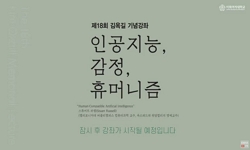이 연구는 60세를 전후하여 퇴직하고 노년기가 진행되면 그에 따라 지능과 창의력의 구조와 내용이 어떻게 변화하는지를 선행 연구들의 종설적 접근을 통하여 분석해 보았다. 지능은 성인기...
http://chineseinput.net/에서 pinyin(병음)방식으로 중국어를 변환할 수 있습니다.
변환된 중국어를 복사하여 사용하시면 됩니다.
- 中文 을 입력하시려면 zhongwen을 입력하시고 space를누르시면됩니다.
- 北京 을 입력하시려면 beijing을 입력하시고 space를 누르시면 됩니다.
https://www.riss.kr/link?id=A109053793
- 저자
- 발행기관
- 학술지명
- 권호사항
-
발행연도
2024
-
작성언어
-
-
주제어
노년 스타일 ; 노인 ; 노화 ; 지능 ; 창의력(성) ; Ageing ; Creativity ; Intelligence ; Old age style ; Old man
-
KDC
370
-
등재정보
KCI등재
-
자료형태
학술저널
- 발행기관 URL
-
수록면
1-22(22쪽)
- 제공처
-
0
상세조회 -
0
다운로드
부가정보
국문 초록 (Abstract)
이 연구는 60세를 전후하여 퇴직하고 노년기가 진행되면 그에 따라 지능과 창의력의 구조와 내용이 어떻게 변화하는지를 선행 연구들의 종설적 접근을 통하여 분석해 보았다. 지능은 성인기가 지나면 서서히 안정적으로 쇠퇴해 가지만 그러나 변화의 내용은 어떠한 지능인가에 따라 그리고 개인에 따라 다를 수 있다. 유동성 지능은 노화의 영향을 크게 받아 쇠퇴는 보다 뚜렷하고, 이의 기본적인 기능인 반응의 속도와 정확성은 떨어지기 시작한다. 그러나 결정성 지능은 비교적 고정적이며 노화과정의 영향을 별로 받지 않으며 또한 유동성 지능의 쇠퇴를 유의하게 보상해 줄 수 있다. 지능에 대한 집단 평균치를 개인에게 바로 적용하는 것은 부정확할 수 있는데, 그것은 경험뿐 아니라 보존되는 구체적인 지적기능의 정도가 개인 따라 다르기 때문이다. 창의력의 노화에 대한 정점후 쇠퇴이론에서는 창의력은 30-40대 어디에서 정점에 이르렀다가 그 이후 점차 쇠퇴한다고 보는 반면, 전생애 발달이론에서는 창의력은 연령의 증가에 따라 쇠퇴하는 것이 아니라 다만 그것이 표현되는 스타일이 이동할 뿐이라 주장한다. 사고와 지혜가 성숙해 감에 따라 새로운 노년 스타일을 개발하며 그리하여 노년의 창의적 사고는 혁명적이기보다는 더 점증적인 것으로, 그리고 개념적인 것보다는 더 실험적 내지 시행착오적인 것으로 진화해 간다. 마지막으로 노화 과정에 대한 심리학적 분석이 가지는 몇 가지의 실제적 함의들을 제시해 보았다.
다국어 초록 (Multilingual Abstract)
This study explored the developmental changes of intelligence and creativity in ageing process of the late adulthood. The intelligence declined generally in ageing once subjects passed the age of around sixty or more, but the pattern of its changes wa...
This study explored the developmental changes of intelligence and creativity in ageing process of the late adulthood. The intelligence declined generally in ageing once subjects passed the age of around sixty or more, but the pattern of its changes was differential. Fluid intelligence could be surely affected by ageing and the basic reflex skills such as the response time and response accuracy deteriorated steadily. But crystallized intelligence, which had been based on the pre-learned knowledge, could be relatively fixed and so unaffected by the ageing process and, further, it could compensate for some of the effects of fluid intelligence loss. These group data on intellectual skills decline might not be uniformly true of all ageing people and inter-individual variability increased significantly with age. There were two theoretical models explaining the aging-related changes of creative thought. The peak and decline model insisted that there should be creativity peak at the age of around 30 - 40 and thereafter creativity declined. But the life-span developmental model of creativity proposed that creativity would reveal no decline, though the creative activities could be decreased. With development of an old age style of dialectical mode, the creativity of the aged people were seemed to evolve to be more incremental than revolutionary and to be more experimental than conceptual. Finally the study noted several implications of the ageing studies employing subjects of the young-olds.
목차 (Table of Contents)
- Ⅰ. 머리말
- Ⅱ. 노화하는 지능
- Ⅲ. 창의력의 발달과 변화
- Ⅳ. 맺음말
- 참고문헌
- Ⅰ. 머리말
- Ⅱ. 노화하는 지능
- Ⅲ. 창의력의 발달과 변화
- Ⅳ. 맺음말
- 참고문헌
동일학술지(권/호) 다른 논문
-
개념도 분석을 통해 본 초등학생 학부모의 선행학습에 관한 인식
- 대한사고개발학회
- 이혜준(Hye-Jun Lee)
- 2024
- KCI등재
-
메타인지, 학습판단 및 학습전략 사용정도가 중학교 과학 학업성취에 미치는 영향
- 대한사고개발학회
- 박미정(Mijeong Park)
- 2024
- KCI등재
-
- 대한사고개발학회
- 허주연 (Juyeon Heo)
- 2024
- KCI등재
-
- 대한사고개발학회
- 김은미(Eun-Mi Kim)
- 2024
- KCI등재





 스콜라
스콜라






